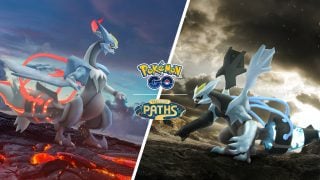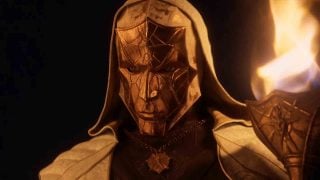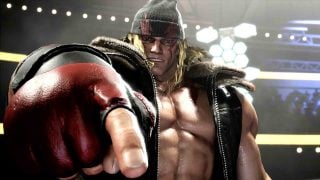There’s a long-running joke in video game circles that I’m sure you’ve heard about the star of The Legend of Zelda actually being named Link, a sword fighter whose quest is to save the titular Princess Zelda. Over the years the joke morphed into an earnest sentiment: people wanted to see Zelda star in her own adventure. For decades there’s been speculation after nearly every reveal of a new Zelda game that surely, this time, Zelda is the real protagonist. Thankfully, after almost 40 years with her name in the title, Zelda finally has the spotlight in her own Legend of Zelda game with The Legend of Zelda: Echoes of Wisdom.
A Princess’s Journey
Echoes of Wisdom opens where a typical Zelda game would usually end, with Link racing through a dungeon to fight Ganon and save Zelda. He manages to do just that, but following Ganon’s defeat at the hands of Link, Link is pulled into a shadowy rift, leaving Zelda alone to escape as the rift expands. From there, the player takes control of Zelda as she sets off on a quest to close the rifts around Hyrule and rescue Link. Along for the ride is Zelda’s small companion Tri, who gives Zelda the Tri Rod, which can use Tri’s power to create Echoes.
Echoes of Combat
Echoes are replicas of objects and enemies that Zelda can summon to solve puzzles and fight on her behalf. Every single enemy that Zelda encounters can be summoned as an Echo, as long as it isn’t a boss. Besides enemies, several objects from around Hyrule are available for Zelda to learn as an Echo as well. Normal stuff like beds, crates, and jars are available early on, but eventually you’ll find more unique Echos to learn, like clouds, fireworks, and blocks of water.
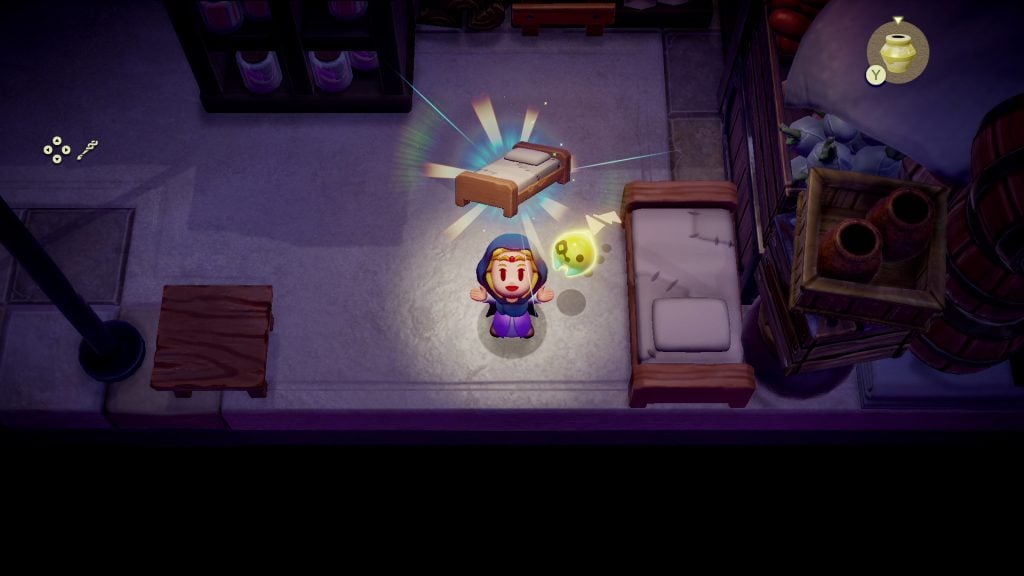
The creativity behind which Echoes you can learn and how you can use them is one of my favorite aspects of Echoes of Wisdom – I was always delighted to find a new enemy that I could use to do my bidding, and using random objects to do unexpected things never got old. I could never get enough of using monster Echoes to fight battles and was always trying to find the best monster for the situation. Even in boss fights, which are heavily designed around Swordfighter Form (more on that in just a second), I had more fun trying to see how I could best fell a boss using the monsters I had on hand. Sure it was frustrating or painfully slow at times, but more than anything the experimentation was fun.
On the flipside, the further I got into the game, the less creative I actually felt, despite my selection of Echoes growing. The more Echoes I collected, the less I felt I needed to solve the game’s puzzles instead of bypassing them entirely. There are puzzles I never learned how to solve, because it was simply easier to fly right past them on top of a Flying Tile. Sure, you can point the blame back at me and say that I should have tried to play the intended way, but using all the tools at your disposal is something that Echoes of Wisdom’s design seems to actively encourage. I’ll touch on this in a broader sense further down, but as far as Echoes go, I feel that Echoes of Wisdom simply gives you too much freedom.
Our Princess, the Swordfighter
While the majority of Echoes of Wisdom’s combat is done via summoning Echoes, Zelda also has access to Swordfighter Form, which sees Zelda transform into a ghostly replica of Link and allows her to use his Sword and, later in the game, his other weapons, the Bow and Bombs. Swordfighter Form relies on an energy meter that builds up, limiting its use and ensuring that you can’t just blow through every encounter as if it were a traditionally Link-centric Zelda game. When Swordfighter form was first revealed in the lead up to the release of Echoes of Wisdom, I was hesitant about the idea. Why should Zelda have to transform into Link at all? Why should she be limited in her ability to efficiently dispatch enemies? Can’t she just use a sword on her own?
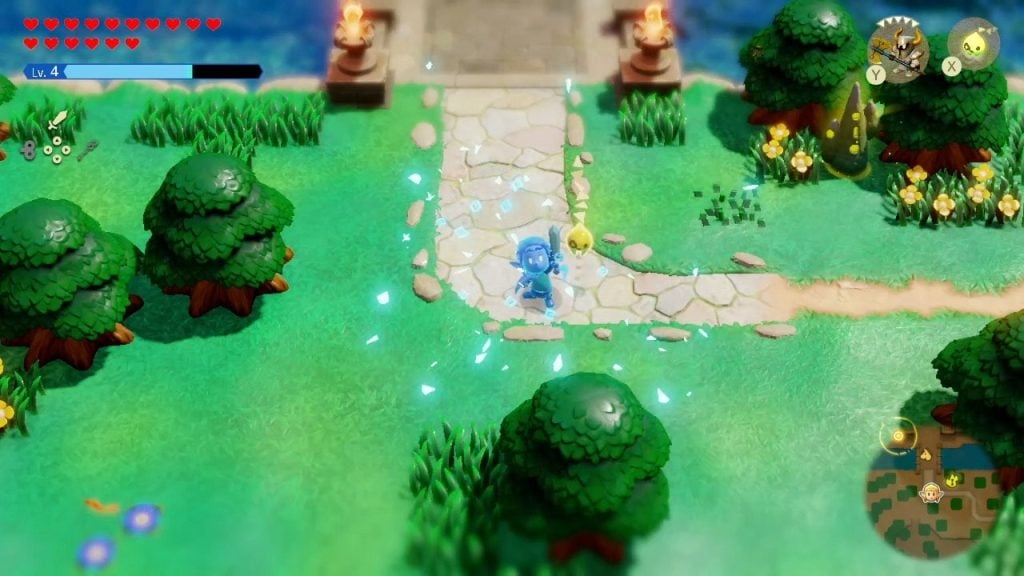
After playing through the game I have to report that my feelings are much the same as they were after the initial reveal. I understand why Swordfighter Form exists; it gives a traditional “Zelda” feel to the experience and allows you to quickly dispatch enemies if you’re overwhelmed despite your Echoes. But why was the experience designed this way in the first place? Combat could have been better designed around the use of Echoes, or Zelda could have been given her own set of combat abilities. In a game where Zelda (who historically has access to strong magic and things like Light Arrows). is finally the star, it’s disappointing that she’s only at her strongest when she gets to turn into Link.
The Princess’s Kingdom
Design-wise, Echoes of Wisdom knocks it out of the park. The toy box-inspired visual design from the excellent Link’s Awakening remake returns, and it once again feels like a perfect fit for a top-down Zelda game. Plenty of classic Zelda enemies and other species are present and instantly recognizable, and I had a blast exploring each corner of Hyrule to see which species lived there. (Special shoutout to the ever-adorable Deku Scrubs and their big personalities.)
Even past the visual design, the design of the dungeons in Echoes of Wisdom, especially later dungeons, was a refreshing change of pace. Each dungeon is an actual, fleshed-out Zelda dungeon, with distinct visual design and unique mechanics to their puzzles that make them stand out from one another – something I always enjoyed about The Legend of Zelda games pre-Breath of the Wild. The dungeons in Faron and Lanayru especially step it up a notch, with great puzzles that were not easily skippable with the right Echoes, instead requiring me to really think to solve them and get where I wanted to go.
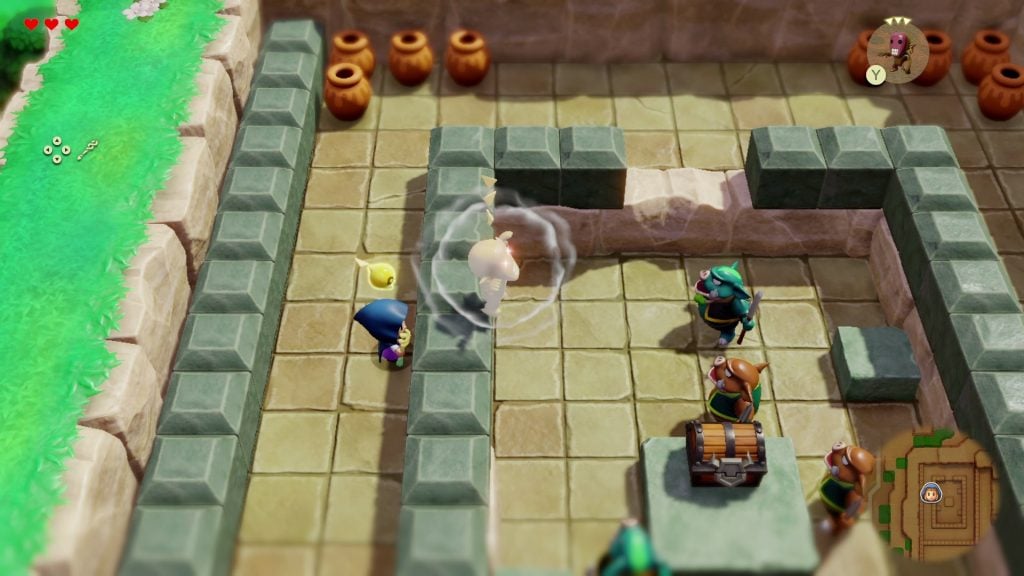
As a whole, however, the broader game-design elements of Echoes of Wisdom left me wanting a little less freedom overall, as I mentioned above. The simplest way I can describe it is that while Echoes of Wisdom is first and foremost a top-down Zelda game, it feels a little too inspired by the open world and quest design of The Legend of Zelda: Breath of the Wild and Tears of the Kingdom – despite how much I really love both of those games. Shortly after completing the first dungeon, you are given the freedom to go just about anywhere in Hyrule – a strong break from the usual top-down Zelda norm of limiting your exploration and progress behind obtaining certain items. You can jump and swim from the get-go, and as you explore you’re constantly learning new Echoes that make traversal easier and easier. That sense of freedom of exploration works well in the vast 3D Hyrule of Breath of the Wild and Tears of the Kingdom, but in the top-down Echoes of Wisdom I would much rather have seen a more focused approach.
Farewell, for now
The Legend of Zelda: Echoes of Wisdom is a solid Zelda game, and I really enjoyed my time playing through it. At the same time, it’s not exactly groundbreaking except for the fact that you’re playing as Zelda instead of Link. It’s a good first outing for Zelda as the protagonist, but I also think that just a few tweaks could have made it a truly incredible experience. Dungeons could have permitted the use of only certain Echoes to preserve the spirit of a lot of their puzzles, while Swordfighter Form could either have been giving Zelda her own sword (maybe even an Echo of a sword if it’s crucial for it to be limited-use), or Zelda could have had her own set of combat abilities instead of using what’s already been available to Link for decades. I had fun with the variety of Echoes, and I’m always a sucker for top-down Zelda and its focus on puzzles, but it feels like Echoes of Wisdom could have been a better game if it wasn’t simultaneously held back by its insistence on shoehorning in classic Zelda combat and its Breath of the Wild-like exploration. I think Princess Zelda has more to offer, and hopefully Echoes of Wisdom won’t be her only chance to show it.
Leave a Comment
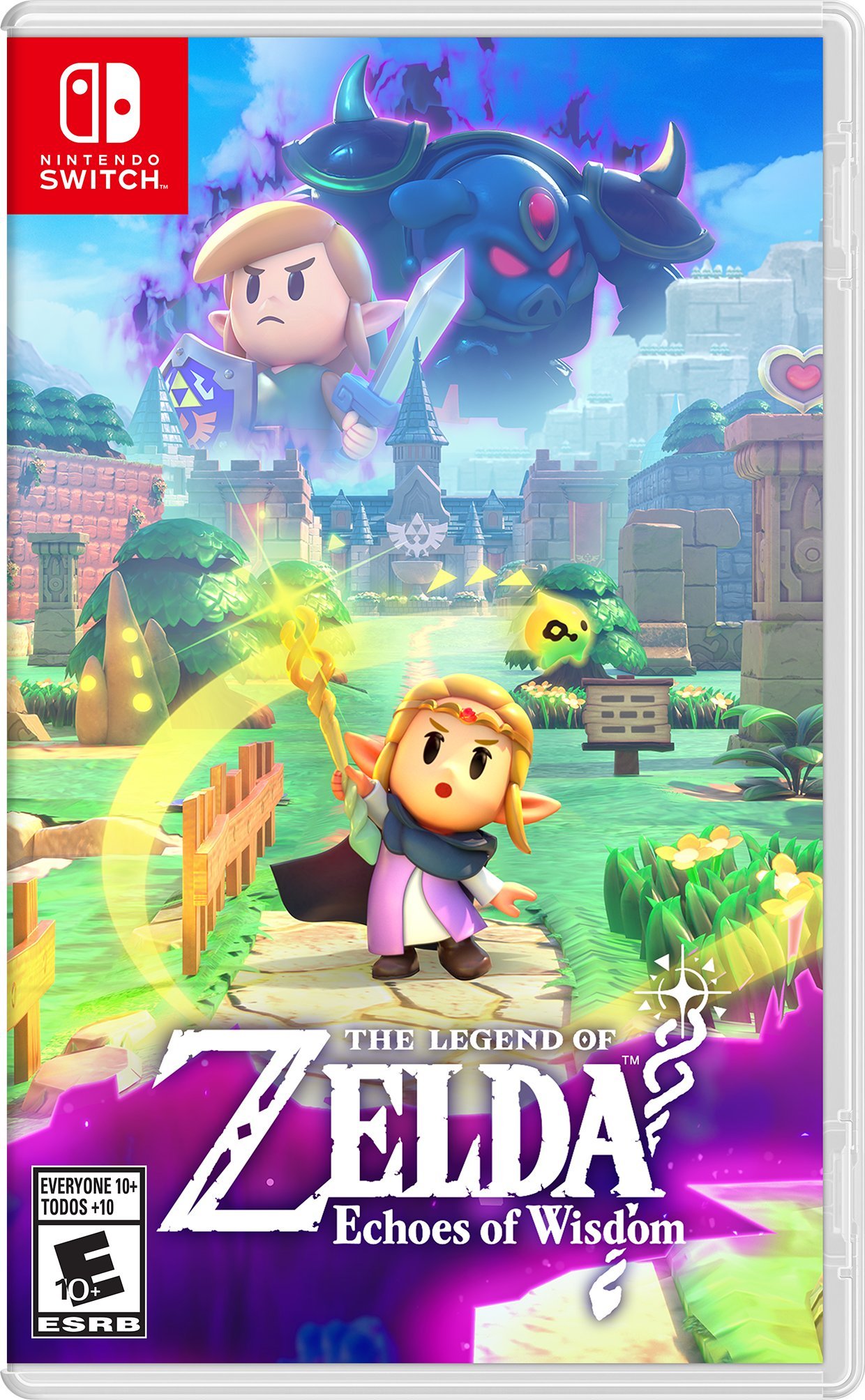
System: Nintendo Switch
Release Date: September 26, 2024
Categories: Action, Adventure
Publisher: Nintendo
Developer: Nintendo, Grezzo
